Last update:
Astronomy news

Astronomers explain rapid formation of organic macromolecules in protoplanetary disks around young stars
An international team of researchers led by the University of Bern has used observation-based computer modeling to find an explanation for how macromolecules can form in a short time in disks of gas and dust around young ...
Astronomy
43 minutes ago
0
0

Ever see a star explode? You're about to get a chance very soon
Every clear night for the last three weeks, Bob Stephens has pointed his home telescope at the same two stars in hopes of witnessing one of the most violent events in the universe—a nova explosion a hundred thousand times ...
Astronomy
14 hours ago
0
57

New study simulates gravitational waves from failing warp drive
Imagine a spaceship driven not by engines, but by compressing the spacetime in front of it. That's the realm of science fiction, right? Well, not entirely. Physicists have been exploring the theoretical possibility of "warp ...
Astronomy
21 hours ago
0
195
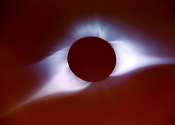
Why the solar corona is so much hotter than sun's surface
In a new study published in The Astrophysical Journal, a researcher from The University of Alabama in Huntsville (UAH), a part of the University of Alabama System, explores critical aspects of a phenomenon called kinetic ...
Astronomy
22 hours ago
0
19
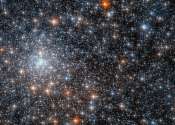
Globular cluster NGC 6558 explored with Gemini Observatory and Hubble Space Telescope
Using the Gemini Observatory and the Hubble Space Telescope (HST), an international team of astronomers has investigated a Galactic globular cluster known as NGC 6558. Results of the new study, published July 22 on the pre-print ...

Dark matter seen through forest: Study examines matter distribution and supports unknown influence or new particle
The dense peaks in the wavelength distribution graph observed in a Lyman-Alpha forest indeed resemble many small trees. Each of those peaks represents a sudden drop in "light" at a specific and narrow wavelength, effectively ...
Astronomy
Jul 29, 2024
1
39

Hubble images NGC 3430, a classic spiral galaxy
This NASA/ESA Hubble Space Telescope image treats viewers to a wonderfully detailed snapshot of the spiral galaxy NGC 3430 that lies 100 million light-years from Earth in the constellation Leo Minor.
Astronomy
Jul 28, 2024
0
54
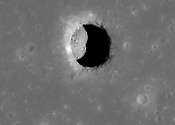
A cave discovered on the moon opens up new opportunities for settlement by humans
Almost 55 years after the launch of Apollo 11—the first mission to land humans on the moon—scientists have found evidence of a large cave system near the landing site of those astronauts.
Astronomy
Jul 27, 2024
1
368

Not one, but two meteor showers are about to peak—here's how to catch the stellar show
On any clear night, if you gaze skywards long enough, chances are you'll see a meteor streaking through the sky. Some nights, however, are better than others.
Astronomy
Jul 26, 2024
0
64
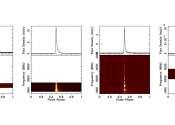
Study sheds more light on the nature of pulsar PSR J1227−6208
Astronomers from the Max Planck Institute for Radio Astronomy (MPIfRA) in Bonn, Germany and elsewhere have inspected a recycled pulsar known as PSR J1227−6208. The new study, published July 18 on the preprint server arXiv, ...
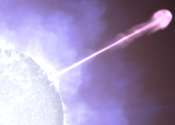
Fermi Telescope finds new feature in brightest gamma-ray burst yet seen
In October 2022, astronomers were stunned by what was quickly dubbed the BOAT—the brightest-of-all-time gamma-ray burst (GRB). Now an international science team reports that data from NASA's Fermi Gamma-ray Space Telescope ...
Astronomy
Jul 25, 2024
2
368

Image: A Saturnian summer
NASA's Hubble Space Telescope captured this image of Saturn and its colossal rings on July 4, 2020, during summer in the gas giant's northern hemisphere. Two of Saturn's icy moons are also clearly visible: Mimas at right, ...
Astronomy
Jul 25, 2024
0
52

How NASA's Roman Space Telescope will illuminate cosmic dawn
Today, enormous stretches of space are crystal clear, but that wasn't always the case. During its infancy, the universe was filled with a "fog" that made it opaque, cloaking the first stars and galaxies. NASA's upcoming Nancy ...
Astronomy
Jul 25, 2024
26
47
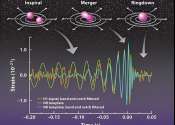
Creation of a deep learning algorithm to detect unexpected gravitational wave events
Starting with the direct detection of gravitational waves in 2015, scientists have relied on a bit of a kludge: they can only detect those waves that match theoretical predictions, which is rather the opposite way that science ...

Next-generation Event Horizon Telescope to unlock mysteries of black holes
The prospect of actually resolving the event horizon of black holes feels like the stuff of science fiction, yet it is a reality. Already, the Event Horizon Telescope (EHT) has resolved the horizon of the black holes at the ...
Astronomy
Jul 24, 2024
4
65
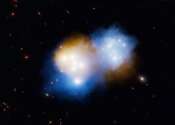
Dark matter flies ahead of normal matter in mega galaxy cluster collision
Astronomers have untangled a messy collision between two massive clusters of galaxies in which the clusters' vast clouds of dark matter have decoupled from the so-called normal matter. The two clusters each contain thousands ...
Astronomy
Jul 24, 2024
20
560

Galaxy clusters could be used as dark matter colliders to understand nature of invisible particles, say scientists
What is dark matter? Even for astrophysicists, it's a question that remains unanswered. These invisible particles make up most of the matter in the universe and about a quarter of the universe as a whole. They are thought ...
Astronomy
Jul 24, 2024
0
45

Two additional components of the CC Com system found
Using the TÜBİTAK National Observatory (TUG) and NASA's Transiting Exoplanet Survey Satellite (TESS), astronomers have investigated a short-period contact binary known as CC Com. As a result, they detected two additional ...
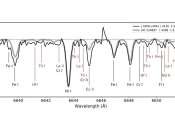
New extremely r-process-enhanced star detected
Using the Gran Telescopio Canarias (GTC), astronomers from the Chinese Academy of Sciences (CAS) and elsewhere have discovered a new extremely r-process-enhanced star in the Milky Way's thin disk. The finding was reported ...

Astrophysicists uncover supermassive black hole/dark matter connection in solving the 'final parsec problem'
Researchers have found a link between some of the largest and smallest objects in the cosmos: supermassive black holes and dark matter particles.
Astronomy
Jul 22, 2024
6
910
Other news

New York's Long Island Sound acidifies during droughts

Researchers develop a tool for visualizing single-cell data

Researchers trap atoms, force them to serve as photonic transistors

New research offers insight on modeling belief dynamics

Old videos of chimpanzees suggest they are capable of speech

Study offers hope for development of vaccine capable of protecting cattle against malignant catarrhal fever































































